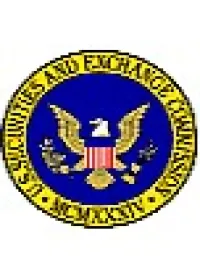Registered investment companies that pursue alternative investment strategies (also referred to as "liquid alts") are a relatively new form of offering for investment managers accustomed to operating private investment funds. Unlike a private fund, which invests without restrictions, the Investment Company Act of 1940 (the 1940 Act) extensively regulates the governance and operations of a liquid alt and imposes restrictions and limitations on its investment activities. In addition, because liquid alts are a relatively new product, retail investors may not fully understand the nature and potential risks of an investment in liquid alts. Nonetheless, liquid alts have experienced significant growth since their introduction. The Wall Street Journal reported that liquid alts have burgeoned from about $38 billion in assets in 172 funds in 2008 to $160 billion in assets in 429 funds in 2014.[1] However, the Securities and Exchange Commission (SEC) has estimated the assets in liquid alts to be in excess of $300 billion as of May 2014.[2] In any respect, liquid alts are the fastest growing sub-category of mutual funds, receiving $40.7 billion in investor funds in 2013.[3] This growth has occurred amidst a net reduction in assets for actively managed domestic equity mutual funds, which lost $575 billion from 2007 to 2013.[4]
This rapid growth has engendered growing regulatory focus. In its Examination Priorities for 2014, the Office of Compliance Inspections and Examinations (OCIE) of the SEC announced that its National Exam Program will include, among other things, a concentrated review of liquid alts focusing on: (i) their leverage, liquidity and valuation policies and practices; (ii) the staffing, funding and empowerment of their boards, compliance personnel and back‑offices; and (iii) their marketing to investors, including the representations and recommendations made to investors concerning the suitability of the investment.[5] In January, OCIE also announced its intention to conduct a coordinated review, or sweep, of liquid alts and their investment advisers. OCIE's initial review, which Division of Investment Management Director Norm Champ recently said is likely to begin this summer or fall, is expected to cover up to 25 alternative investment companies, or approximately 14 percent of the 185 liquid alt fund families currently in operation.[6] Based on the results of its initial review, OCIE will decide whether to conduct a second sweep. One commentator has noted that this sweep on liquid alts reflects how "keen" the SEC is "to shift from reactionary regulation (for which the agency was criticized after the 2008 crisis) to proactive oversight."[7]
OCIE's attention to liquid alts reflects regulatory concern that liquid alts present risks to investors who do not fully understand the nature of liquid alts and their strategies. Indeed, in March 2014, OCIE Director Andrew Bowden characterized liquid alts as "bright, shiny object[s]" but noted that "they are . . . sharp object[s]."[8] The Financial Industry Regulatory Authority, Inc. (FINRA) also has expressed concern about the retail marketplace's understanding of liquid alts; in a June 2013 investor alert, FINRA emphasized the need for investors to recognize the distinctions between liquid alts and both traditional mutual funds and the alternative private funds on whose strategies liquid alts are based.[9]
Liquid alts and their investment advisers can prepare for the sweep and future regulatory action by creating a robust compliance program, with an emphasis on liquidity, valuation and leverage practices, board governance and due diligence programs. Such a program would consider the risks noted by Director Champ in a June 30th address discussing the key points of emphasis the SEC considers in its review of liquid alts.[10] These risks, which include portfolio liquidity, use of leverage, disclosure of strategies and governance are discussed in further depth below.
Any adviser that operates in, or is seeking to enter, the liquid alts space should retain counsel that has extensive experience with the 1940 Act, the SEC and its examinations staff and the types of alternative investments used in liquid alts' strategies.
Introduction to Liquid Alts
Liquid alts are publicly offered funds registered under the 1940 Act. While liquid alts have some of the same characteristics as traditional mutual funds, including daily pricing and liquidity, transparency, and low minimum investments, they seek to employ the risk‑return methods of alternative investment vehicles, including exposure to specific asset classes and the use of leverage and complex trading strategies. Alternative investment strategies (e.g., global macro, long-short equity and managed futures) are generally distinct from, and seek to produce positive risk-adjusted returns that are not closely correlated to, the traditional equity and debt strategies offered by most mutual funds and exchange-traded fund products.
Only certain qualified investors have access to alternative investment strategies through private funds. Recognizing that the popularity of alternative investments has been growing, investment advisers to private funds have seized an opportunity to expand their investor base and assets under management by providing retail investors access to alternative investments through liquid alts.
Alternative investment advisers can bring liquid alts to market by sponsoring independent alternative investment funds or by partnering with an asset manager that already has a fund structure in place, including 1940 Act distribution and compliance capabilities (e.g., an umbrella trust). The decision to independently sponsor a liquid alt or operate a fund out of an umbrella trust will largely depend on factors such as: (i) time and cost sensitivity; (ii) the complexity of underlying strategies and portfolios; and (iii) the desire for establishing a bespoke liquid alt infrastructure.
Independently sponsoring a liquid alt requires, among other things, establishing a board of directors and developing written compliance policies and procedures, regulatory reporting and compliance with the 1940 Act. Under an umbrella trust, much of these operations are in place in a turn-key environment, though not all umbrella trusts are structured in a manner that permits or is suitable for complex liquid alt strategies. In light of the OCIE Examination Priorities (and FINRA's 2013 investor alert), alternative investment advisers operating or preparing to operate liquid alts should consider their operations, the adequacy of their compliance regime and level of reporting to their boards, and the monitoring of portfolio activity in the 1940 Act context. As liquid alt advisers must be registered investment advisers under the Investment Advisers Act of 1940, as amended (Advisers Act), advisers also should consult with counsel regarding their obligations thereunder.
Regulatory Requirements
The 1940 Act imposes certain regulatory requirements on all investment companies, including liquid alts, and their investment advisers and sub-advisers. These requirements mandate, among other things, that liquid alts manage daily liquidity to meet redemption requests and calculate net asset value on a daily basis. The 1940 Act also restricts short-selling and the use of leverage.
Furthermore, under the 1940 Act, a liquid alt adviser must keep the liquid alt's board of directors fully informed about the investments the liquid alt makes and the liquid alt's operations and adherence to its principal strategies and investment restrictions. They also must implement robust due diligence policies and procedures to ensure compliance with the 1940 Act and provide appropriate regulatory documentation to the SEC. Liquid alt advisers that manage a private fund concurrently with a liquid alt also must ensure that investment opportunities are allocated fairly among the vehicles. Experienced counsel can provide guidance to liquid alt advisers on the relevant 1940 Act and Advisers Act requirements, compliance policies and procedures, board governance, due diligence and regulatory documentation.
Governance
The board of directors of a liquid alt oversees its operations and monitors the activities of its service providers (including its investment adviser and any sub-adviser). At least half of the members of the board must be independent (i.e., without any material ties to the investment adviser, distributor or any sub-adviser).
The board has a fiduciary obligation to the shareholders of the liquid alt and must approve advisory agreements and the compliance regime that governs the liquid alt. Liquid alts are subject to board oversight regarding general operations, compliance, new products and service provider performance, as well as on matters such as disclosing and mitigating conflicts of interests. A liquid alt's board must be well-informed and understand complex liquid alt strategies to ensure that they are capable of performing their fiduciary duties to shareholders.
With respect to board operations, the SEC requires that board minutes reflect clear communication and understanding of the structure and risks of alternative investments and thereby indicate that the board was capable of making informed decisions with respect to such investments. Advisers and sub-advisers typically are required to report to, and to comply with all reasonable information requests from, the board on an ongoing basis and, particularly, at quarterly board meetings.
Liquidity and Leverage
Liquid alts are subject to specific 1940 Act requirements that are intended to protect investors. Among other things, the 1940 Act mandates that liquid alts provide daily liquidity and limit their use of leverage.
The 1940 Act limits a liquid alt from investing in excess of 15 percent of its assets in illiquid investments. Furthermore, a liquid alt adviser must have policies and procedures in place to monitor and value such illiquid investments to comply with the daily net asset value publication requirements under the 1940 Act. In particular, liquid alt advisers must have adequate policies and procedures in place to address portfolio management in periods of heightened market movement or high levels of redemptions. A liquid alt adviser that has limited experience with the 1940 Act should work closely with its liquid alt's compliance officers, fund administrators and board of directors' valuation committee to ensure the adequacy of internal reporting, operations and stress testing relating to portfolio management, valuation and illiquid investments. In particular, Director Champ called for the implementation of robust, written policies and procedures to both assess the liquidity of investments and to address fair valuation of illiquid assets.[11]
In addition, the 1940 Act imposes limits and controls on, and disclosure requirements regarding, the use of leverage. While the 1940 Act prohibits direct borrowing for investment purposes, the SEC has allowed borrowing through certain leveraged investments (e.g., futures, written options and short sales). Liquid alt advisers are required to mitigate the risks of leverage either by segregating assets or entering into offsetting transactions to cover possible liabilities. They must also limit the overall amount of leverage and derivatives exposure and should establish a risk management framework to assess the impact of various market conditions on financial instrument positions of the liquid alt.
Given the substantial risks involved with leverage and the fact that leverage is a common strategy among private alternative investment funds, liquid alt advisers' compliance with the 1940 Act's leverage requirements will likely be a key focus of OCIE examinations. Liquid alt advisers should consider employing common governance tools to mitigate the risks of leverage, such as new product diligence committees, risk disclosure reviews and board reporting. Additionally, disclosure regarding leverage and the derivatives used by a liquid alt to obtain such leverage is likely to remain a point of emphasis for the Division of Investment Management.
Allocating Investment Opportunities
Each liquid alt adviser has a fiduciary obligation to allocate investment opportunities fairly among its clients. A liquid alt adviser that manages a private fund side-by-side with a liquid alt that has similar objectives could face a conflict of interest due to the private fund's payment of performance fees, which could incentivize the adviser to allocate more investment opportunities to the private fund than the liquid alt (liquid alts charge a standard advisory fee but generally are not permitted to impose the higher performance-based fees often charged by private funds). Liquid alt advisers should ensure they comply with the requirements of the 1940 Act and the Advisers Act, as well as each fund's respective investment guidelines and restrictions when allocating investment opportunities among client accounts. In particular, liquid alt advisers must develop and implement consistent policies and procedures addressing trade allocation between liquid alts and private funds with the same or similar investment strategies.
Due Diligence Program
For fund structures that involve the use of sub-advisers (e.g., multi-manager liquid alts), liquid alt advisers are required to have robust due diligence policies and procedures to review sub-adviser activities and to ensure compliance with 1940 Act requirements. Earlier this year, OCIE issued a Risk Alert reviewing the due diligence programs of alternative investment advisers.[12] Among other things, OCIE found that alternative investment advisers are increasingly using quantitative and factor analysis to conduct due diligence and that advisers were more likely to consistently apply their due diligence processes when they adopt detailed written policies and procedures that require adequate documentation. OCIE also found deficiencies in alternative investment advisers' annual reviews of their policies and procedures and in their due diligence of marketing materials. In developing their due diligence programs, liquid alt advisers should address the deficiencies highlighted in the OCIE Risk Alert.
Regulatory Filings
Liquid alts and their investment advisers are subject to various regulatory filings. As discussed below, liquid alt advisers may disclose certain nonpublic regulatory filings to investors upon request or as permitted by law; other regulatory filings are made available to the public by the SEC. For some liquid alts' investment advisers, these regulatory filings are more than legal requirements under the securities laws: investment advisers to liquid alts that invest in underlying liquid alts should request and review the regulatory filings and other information of the underlying liquid alts as part of their investment due diligence policies and procedures.
As registered investment advisers, liquid alt advisers must file Form ADV Part 1 and Part 2A, which are made publicly available on the SEC's Investment Adviser Public Disclosure (IAPD) website.[13] Form ADV Part 1 discloses the adviser's business, ownership, clients, employees and disciplinary events for the adviser's employees. Form ADV Part 2A, commonly known as an adviser's "brochure," contains the adviser's free-form disclosures regarding fees, compensation, conflicts of interests and disciplinary history. In addition, other regulatory information about advisers are made available to the public, including enforcement action notices that reflect settlements, filed cases and decisions.
Certain of a liquid alt adviser's regulatory filings and information are not publicly available but may be provided to investors upon request or as required by law. These documents include Form ADV Part 2B, Form PF (if the adviser also manages at least one private fund), SEC findings, comment or deficiency letters, document requests and subpoenas. Form ADV Part 2B contains biographies of supervised persons of the adviser. Form PF, which the SEC uses to discern sources of systemic risk, contains in‑depth information on the adviser's leverage, risk profile, exposures and liquidity. SEC letters, document requests and subpoenas are nonpublic documents from SEC investigations or examinations. A liquid alt adviser may opt to release the foregoing regulatory filings and other documents in total, redact portions thereof or have investors review the filings and/or documents at the adviser's place of business. Liquid alt advisers should develop policies and procedures to govern such release of nonpublic regulatory filings and information.
As registered investment companies, the liquid alts themselves file a registration statement on Form N-1A, including a statutory prospectus and statement of additional information, with the SEC to register their securities in a public offering. Form N-1A provides required disclosures and basic financial information and sets forth certain investment policies and restrictions to which the liquid alt's investment adviser may be bound. Advisers and their counsel should periodically review disclosure to ensure that it adequately describes in plain English the risks of investment in, as well as the principal strategies and the operations of, the liquid alt. A liquid alt also will be required to file periodic reports on Form N-CSR (annual shareholder report), Form N-SAR (semi-annual report), Form N-PX (proxy voting report) and Form N-Q (quarterly portfolio holding report).
Preparing for SEC Examinations
To prepare for SEC examinations and future regulatory oversight of liquid alts, liquid alt advisers should examine their compliance and portfolio management policies and procedures to ensure that their liquid alts operate in a manner consistent with liquidity requirements, leverage limits and portfolio monitoring systems. Liquid alt advisers also should work with the liquid alts' chief compliance officers and their boards of directors to update investment allocation and due diligence policies and procedures and to ensure that all relevant parties are fully informed of, and understand the substance of, the alternative investment strategies employed by the liquid alt.
Due to the heavily regulated nature of liquid alts, liquid alt advisers should seek experienced counsel that is intimately familiar with the 1940 Act, the SEC and its examinations staff and alternative investments.
[1] Daisy Maxey, Alternative Mutual Funds Draw Concerns, The Wall Street Journal, May 1, 2014, citing Morningstar.
[2] Norm Champ, Director, Division of Investment Management, Remarks to the Practising Law Institute, Private Equity Forum, June 30, 2014, citing the Risk Analysis and Surveillance Team of the SEC's Division of Enforcement.
[3] Trevor Hunnicutt, Popular "Liquid Alts" Funds Face Regulatory Scrutiny, Investment news, June 24, 2014.
[4] Id.
[5] National Exam Program: Examination Priorities for 2014, Office of Compliance Inspections and Examinations, January 9, 2014.
[6] Id; see also footnote 2.
[7] SEC Sweep: Liquid Alternative Funds, PricewaterhouseCoopers (June 2014).
[8] Andrew Bowden, Director, Office of Compliance Inspections and Examinations, People Handling Other People's Money at the Investment Adviser Association Compliance Conference (Mar. 6, 2014).
[9] Alternative Funds Are Not Your Typical Mutual Funds, Financial Industry Regulatory Authority, Inc., June 11, 2013.
[10] See footnote 2.
[11] See footnote 2.
[12] National Exam Program Risk Alert: Investment Adviser Due Diligence Processes for Selecting Alternative Investments and Their Respective Managers, Office of Compliance Inspections and Examinations, January 28, 2014.
[13] The IAPD website.






 />i
/>i

